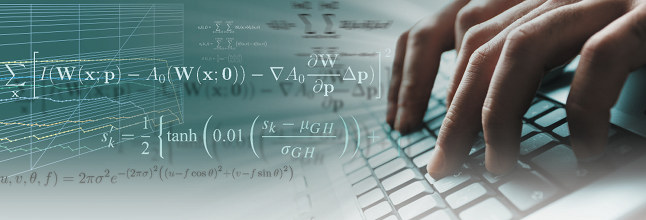 For designers, hobbyists, and those at the desktop level, 3D printing centers around a previously unheard of sense of independence for those who want to produce their own 3D models and prototypes on the spot, without the expense and hassle of a manufacturing middleman — or a wait.
For designers, hobbyists, and those at the desktop level, 3D printing centers around a previously unheard of sense of independence for those who want to produce their own 3D models and prototypes on the spot, without the expense and hassle of a manufacturing middleman — or a wait.
For an inventor to be able to dream up a concept right out of thin air and take it straight to a 3D design, resulting in a 3D printing process that can roll out as many models as their equipment can handle, or for a jewelry designer to make a new design and 3D print it out for further accentuating and direct sale in the marketplace, 3D printing is not only a great deal of fun, it changes the business model and timeframe enormously.
 Now what if you could cut out some of the middle technology as well, like the headaches of saving up for an expensive 3D scanner and dealing with the difficulties involved? As the ubiquitous smartphone begins to takes up the slack nearly everywhere in our lives with the exception of taking out the trash and ironing our clothes for Monday morning meetings, it would seem capturing 3D models should be a snap too. Neurotechnology, headquartered in Lithuania, specializes in precision imaging software, and they are about to make life a lot smoother for those involved in 3D modeling.
Now what if you could cut out some of the middle technology as well, like the headaches of saving up for an expensive 3D scanner and dealing with the difficulties involved? As the ubiquitous smartphone begins to takes up the slack nearly everywhere in our lives with the exception of taking out the trash and ironing our clothes for Monday morning meetings, it would seem capturing 3D models should be a snap too. Neurotechnology, headquartered in Lithuania, specializes in precision imaging software, and they are about to make life a lot smoother for those involved in 3D modeling.
Hoping to eliminate expense and complexities involved in scanning and photography, as well as drawing of meshes and wireframes, Neurotechnology announced today that they are releasing new software. The SentiSculpt Software Development Kit (SDK) is used with the smartphone or camera to capture images which can then be translated into models for further refining in software applications or for 3D printing.
Neurotechnology sees SentiSculpt catering to those involved in virtual reality applications as well as 3D printing. For ease in 3D design application, this new software may prove to add a streamlined and exciting shortcut for gamers, designers, animators, and all those working with 3D designs.
In an incredibly simple process, all the user has to do is take pictures from several different angles so that the software can begin generating meshes or wireframes, and texture mapping, from point clouds. A 2-5 megapixel camera is recommended.
“SentiSculpt brings users a higher visual experience – instead of looking through a series of static, 2D images people can navigate around objects within a 3D environment,” said Dr. Vilius Matiukas, SentiSculpt project lead for Neurotechnology. “It is an excellent opportunity for sculptors to present their work, even make virtual galleries. And for application developers, all of this can be easily integrated in to their own projects with only a few lines of the code.”
With a focus on artificial intelligence and robotics applications, SentiSculpt is the latest innovation recently announced by Neurotechnology. SentiSculpt supports C, C++, and C# development environments under the 64bit Windows platform. This product is the latest in the Senti line, which Neurotechnology began developing in 2004 with the release of SentiSight — image and product recognition technology used in high-tech vision applications.
The Senti line has been developing rapidly since last year with the release of SentiBotics, an innovative development kit for both design and testing of mobile robots. With the inclusion of a 3D vision system, it was the precursor to further integration within the 3D design world. Are you familiar with any of Neurotechnology’s other products? Would the SentiSculpt software be helpful to projects you are working on in 3D design and 3D printing? Tell us your thoughts in the Neurotechnology Releases SentiSculpt forum over at 3DPB.com.
Subscribe to Our Email Newsletter
Stay up-to-date on all the latest news from the 3D printing industry and receive information and offers from third party vendors.
You May Also Like
Precision at the Microscale: UK Researchers Advance Medical Devices with BMF’s 3D Printing Tech
University of Nottingham researchers are using Boston Micro Fabrication‘s (BMF) 3D printing technology to develop medical devices that improve compatibility with human tissue. Funded by a UK grant, this project...
3D Printing Webinar and Event Roundup: April 21, 2024
It’s another busy week of webinars and events, starting with Hannover Messe in Germany and continuing with Metalcasting Congress, Chinaplas, TechBlick’s Innovation Festival, and more. Stratasys continues its advanced training...
3D Printing Webinar and Event Roundup: March 17, 2024
It’s another busy week of webinars and events, including SALMED 2024 and AM Forum in Berlin. Stratasys continues its in-person training and is offering two webinars, ASTM is holding a...
3D Printed Micro Antenna is 15% Smaller and 6X Lighter
Horizon Microtechnologies has achieved success in creating a high-frequency D-Band horn antenna through micro 3D printing. However, this achievement did not rely solely on 3D printing; it involved a combination...






























